This is part 2 of a test of the Sony 12-24 mm f/4 FE lens. The test starts here.
In the previous post, we looked at the Sony 12-24/4 at 18 mm, and threw in a once-mighty Nikon zoom for comparison. It wasn’t much of a contest. In the corners the Sony was shockingly superior.
Now we’ll look at 12 mm.
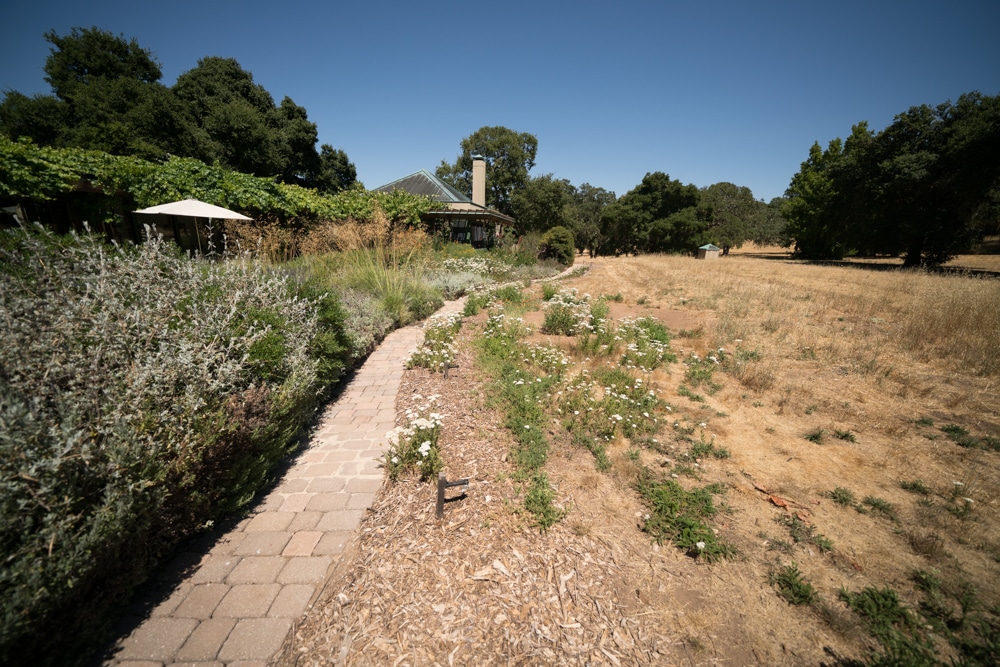
I focused manually at taking f-stop on the lighter foliage in the upper-right-central part of the image. I focused and exposed four times for each aperture, and picked the best shot from each camera for each f-stop. Shutter set to EFCS. 2-second self-timer . Arca-Swiss C1 cube on RRS sticks.Small exposure corrections in Lr. Daylight white balance selected in Lightroom.
I exported tight crops from the developed images as 700-pixel-wide JPEGs. That means that the images are all heavily upsampled. The a7RII images are 295% of their original size in both dimensions.
If you just want a rough idea of the differences, just look at the images as displayed in-line in the posts. However, if you wish to compare these images in detail, you should view these images by clicking on them to see the source files, then setting your browser for 100% zooming. Even better, download them and make Photoshop stacks.
No matter what you do, these crops are all going to look horrible. I’m blowing them up so much so that they will represent the original file after JPEG’s discrete cosine transform has had its way with them. If you want to get a good idea of what the images would look like printed, get far away from your monitor. No, farther than that. Put a bunch of the images up on the screen and back up until the best one starts to look good. Then look at the others. There’s another reason why these images won’t look like the best thing the camera/lens combination can deliver. They’re demosaiced with Lightroom. Lightroom is not awful, but for a particular image, there are usually better raw processors. I use Lr because it’s a de facto standard, because I know it well, and because it’s got good tools for dealing with groups of images.
I’ll show the crops at 18 mm for the two combinations. In the next few posts, we’ll look at the Sony at 12 and 24 mm as well.
In the mid-upper right:
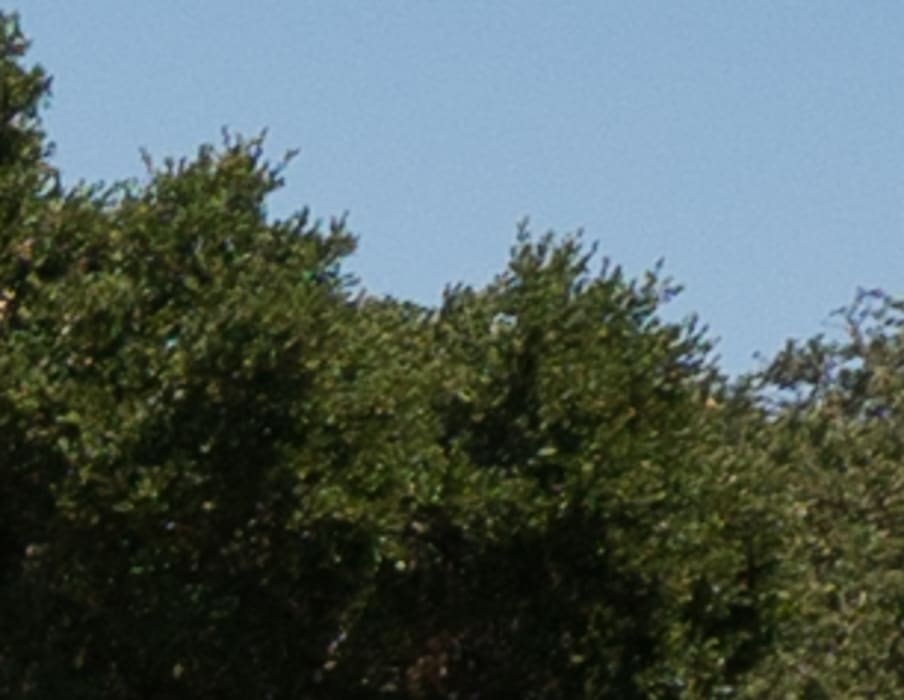
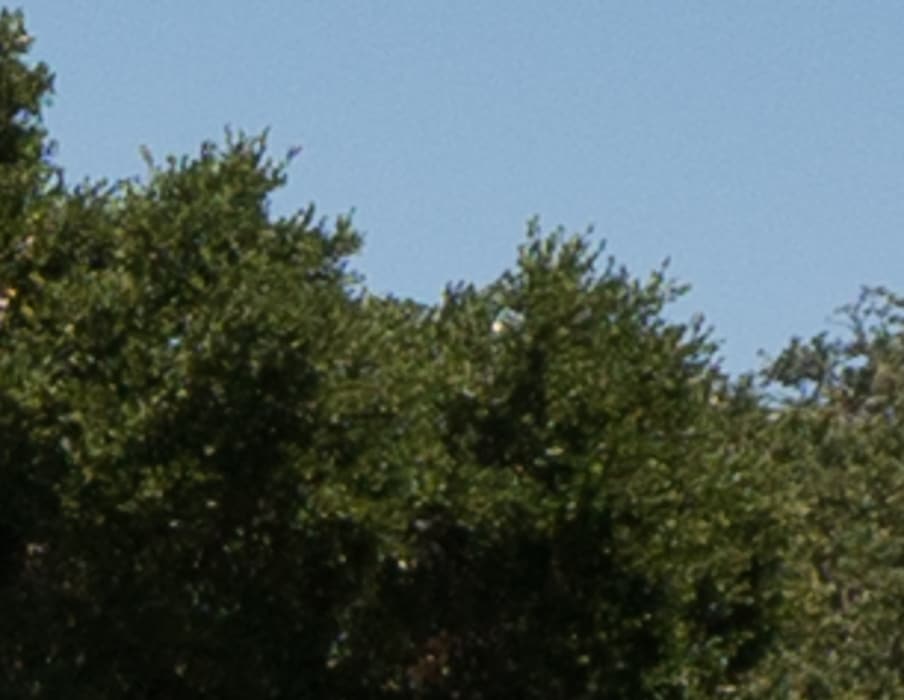
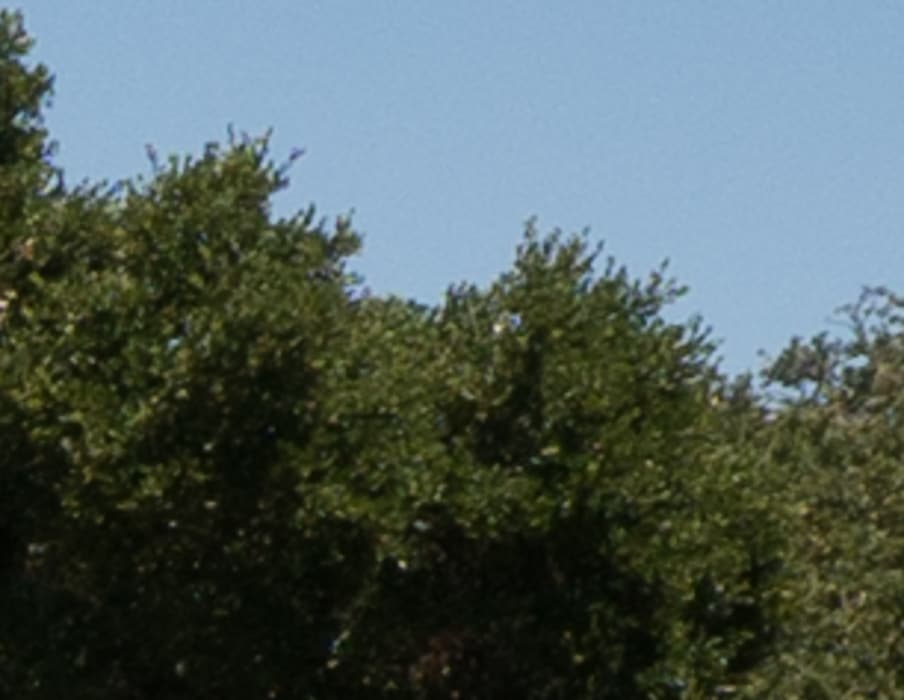
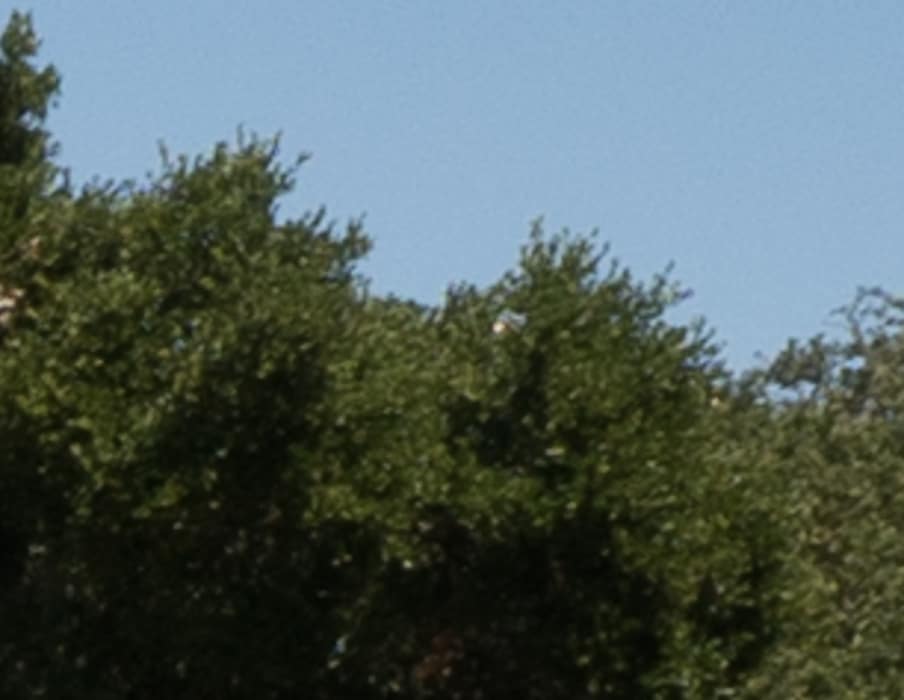
Excellent.
In the upper left corner:
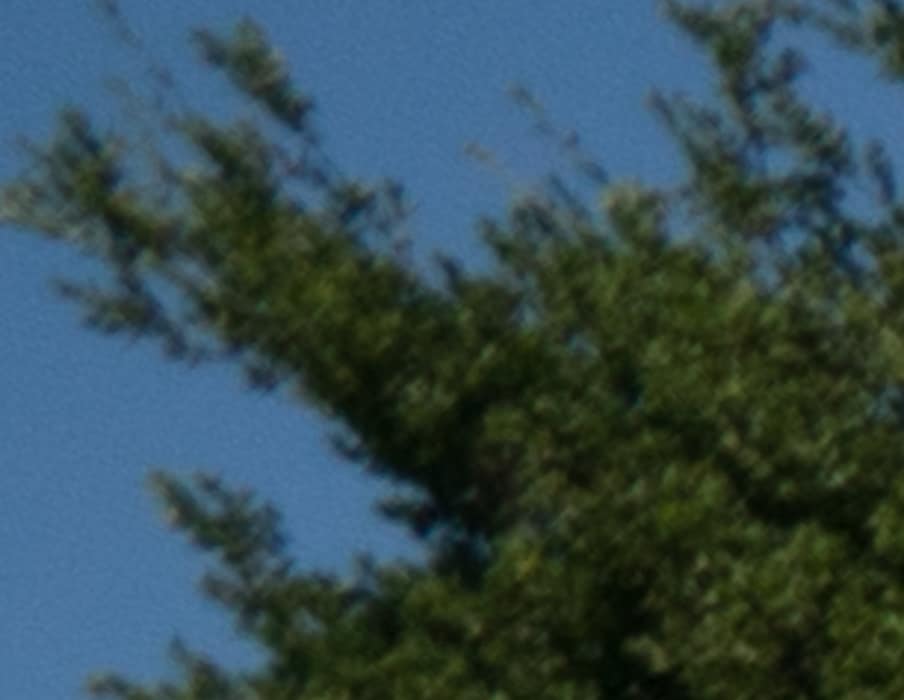
There’s a lot of smearing here.
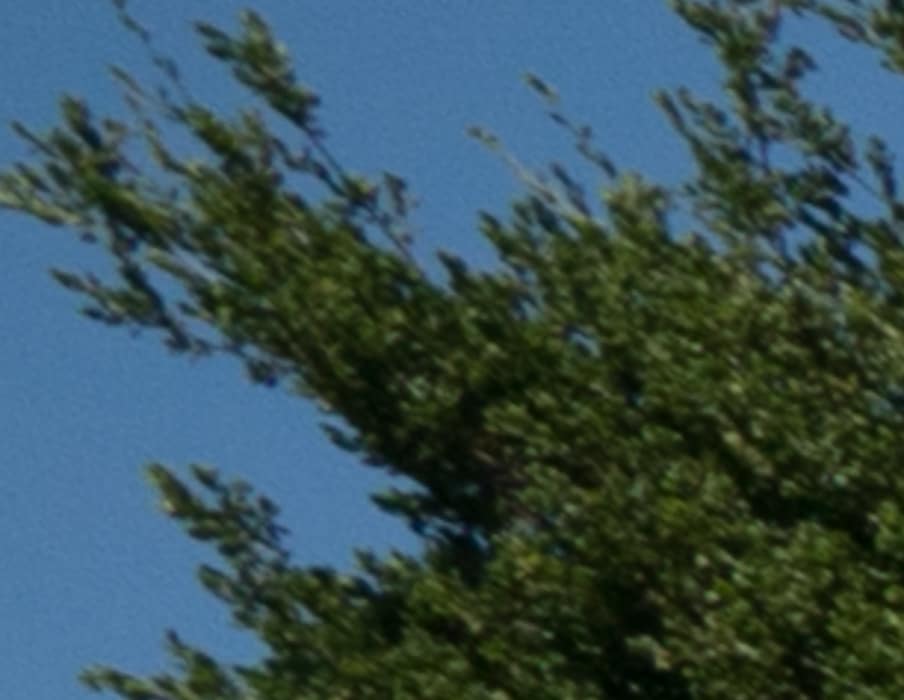
Now it looks pretty darned good.
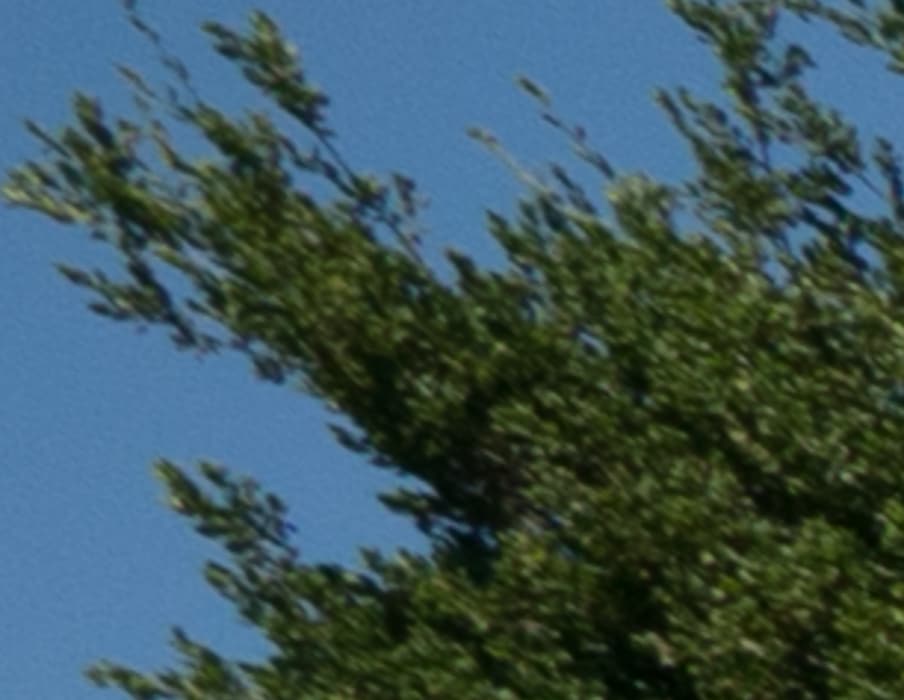
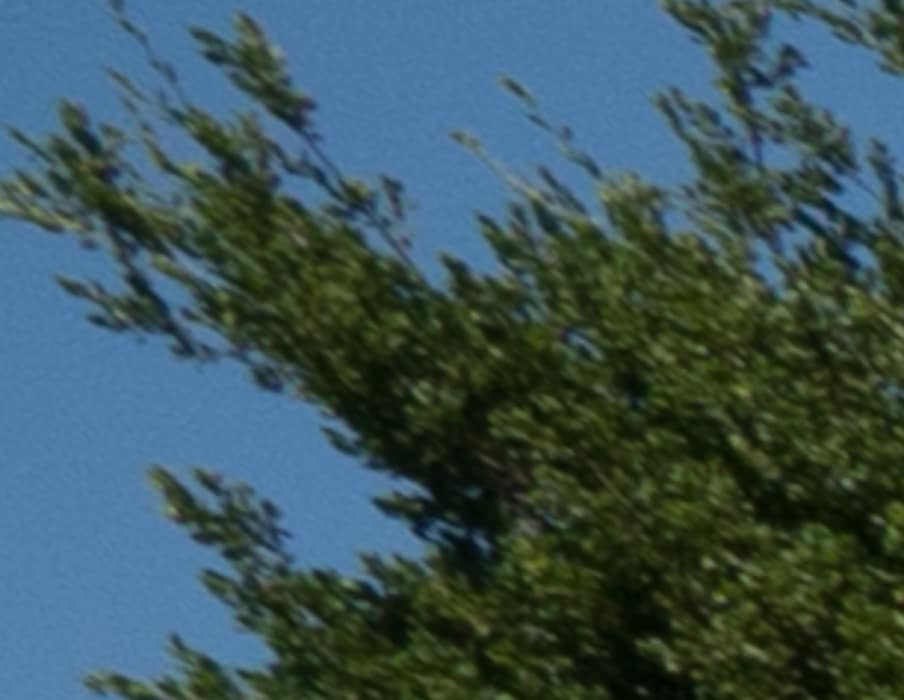
With the exception of f/4, this is very good performance.
24mm overall:
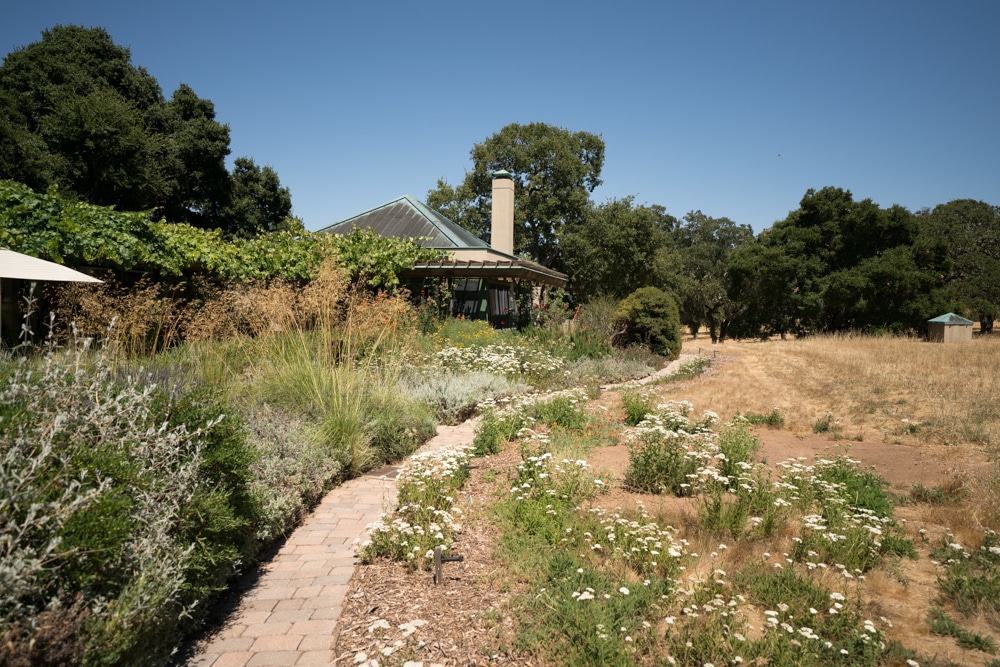
At 24 mm in the mid-upper-right:
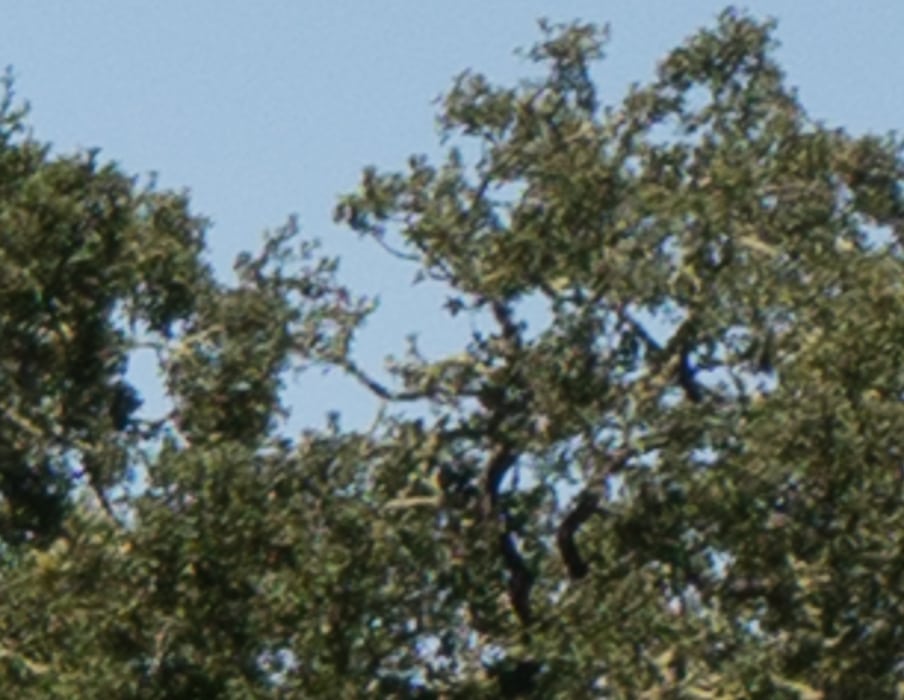
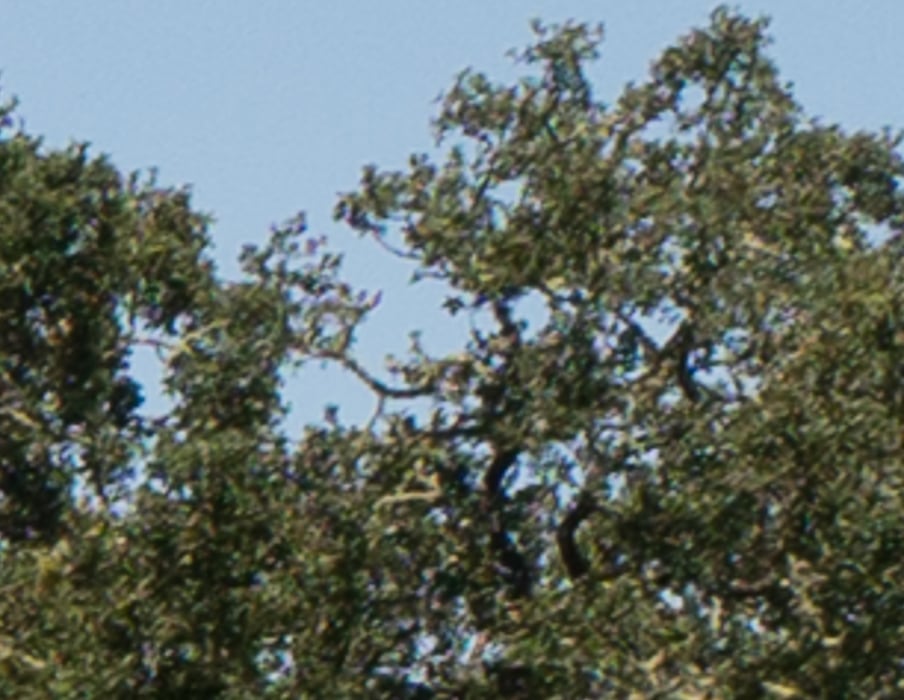
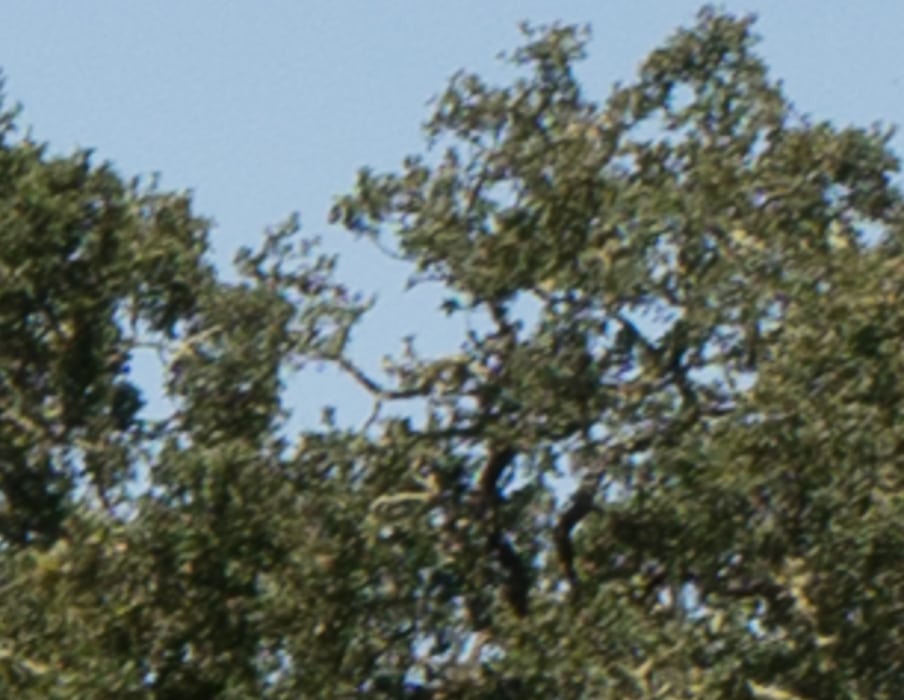
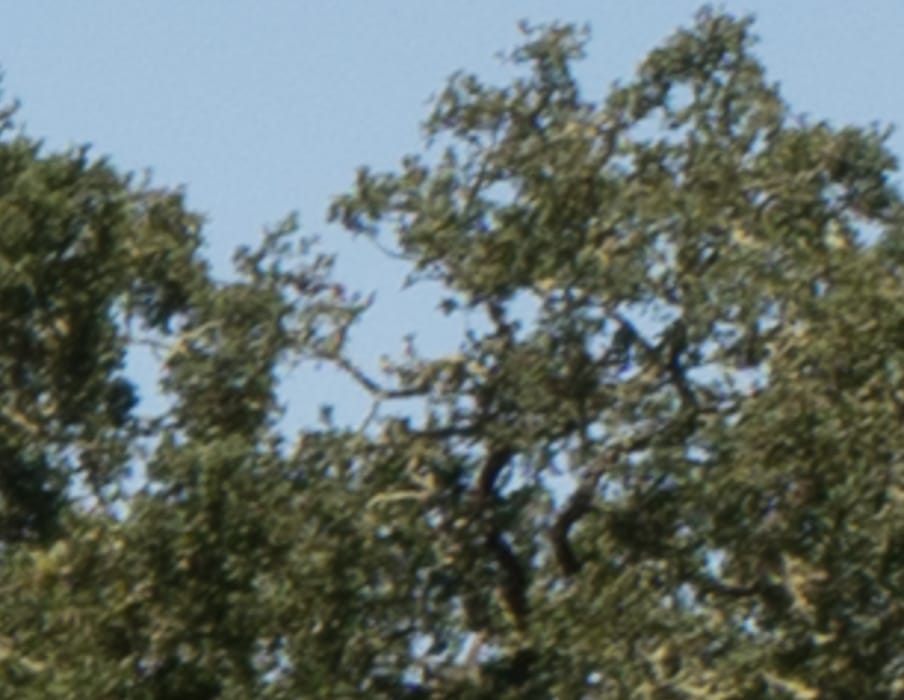
Very good.
In the upper left corner:
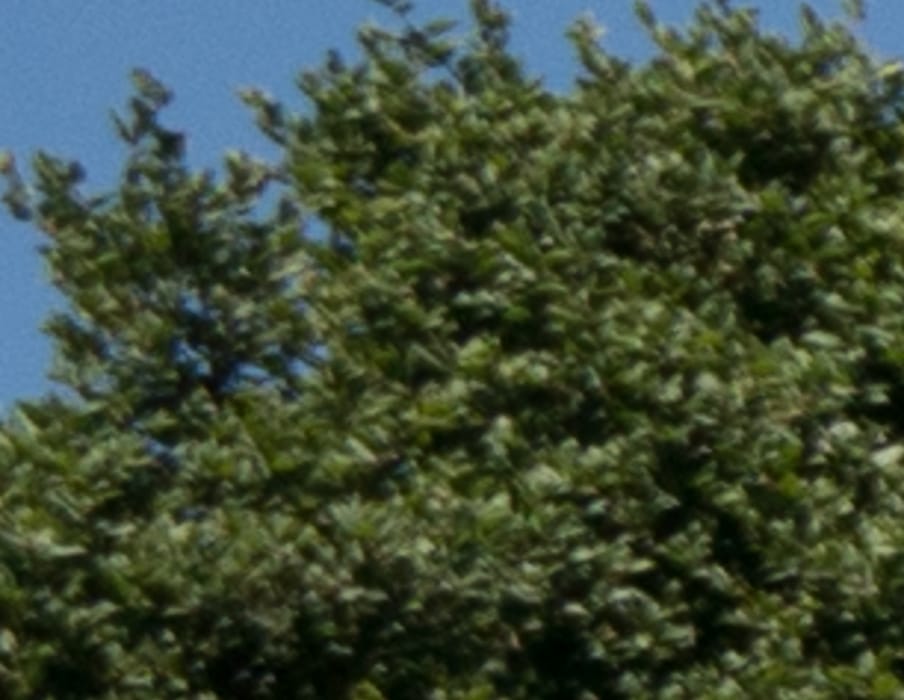
There is nowhere near the smearing here that we saw at 12 mm.
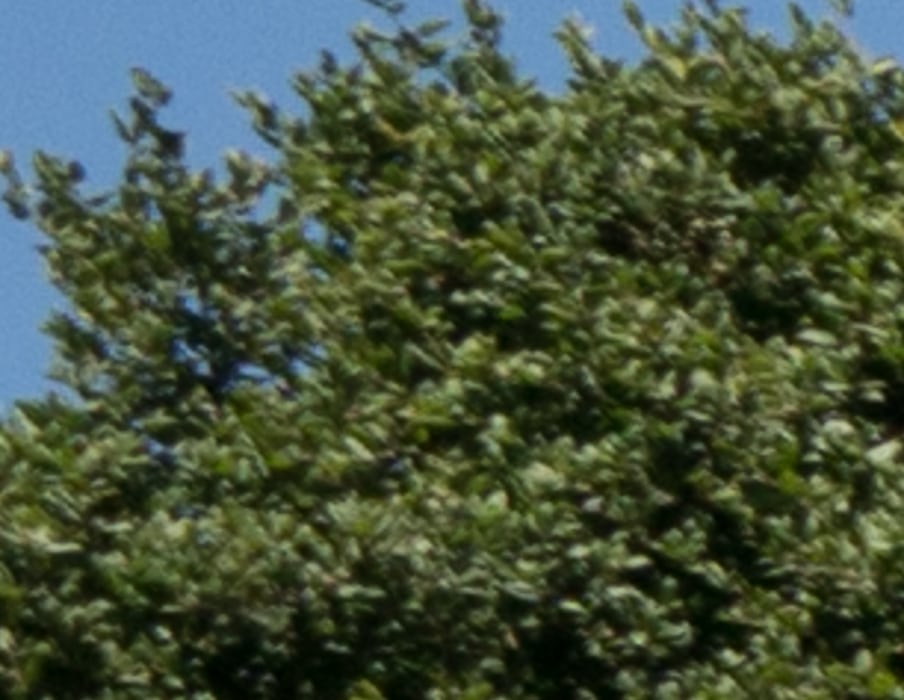
This looks quite good.
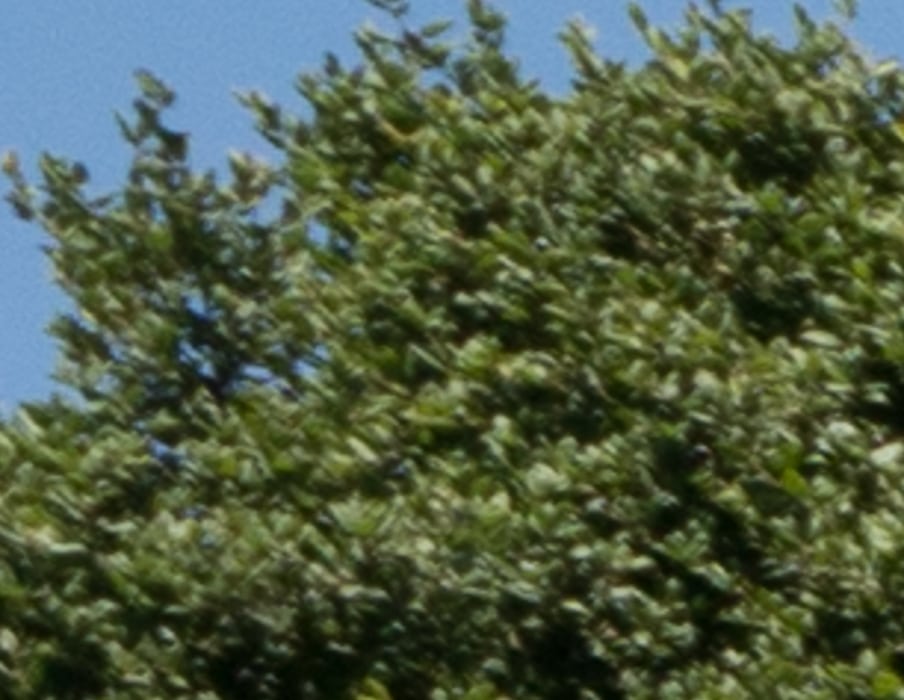
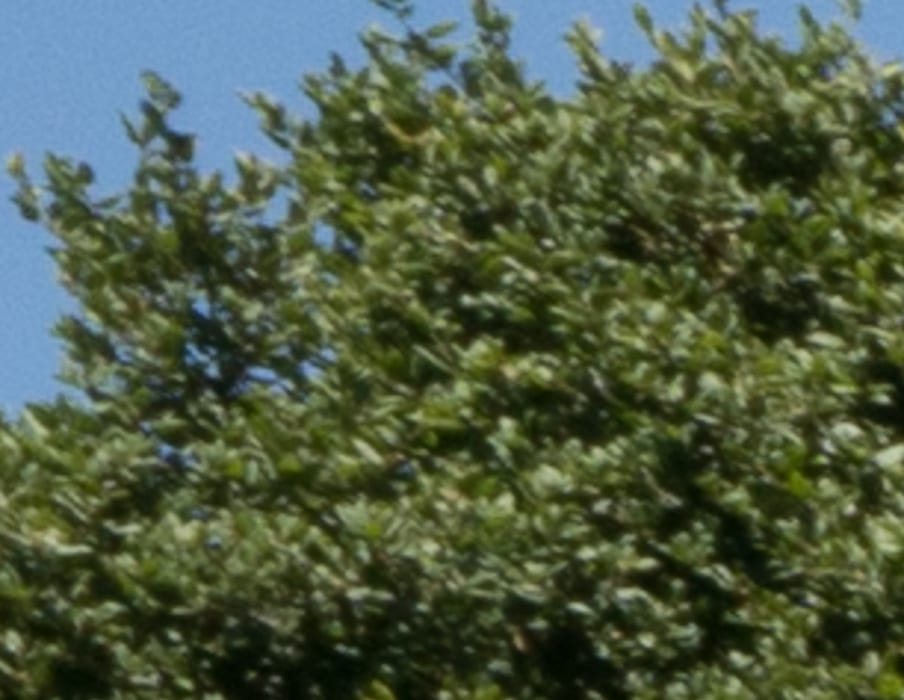
Fine performance in all cases except for 12 mm at f/4.
Edna Bambrick says
I’ve got to ask. You appear to be a guy that would have no problem buying a Phase1 IQ3 100mp.
Why not just do that and enjoy the finest camera in the world instead of monkeying around with all of this fodder in comparison?
JimK says
When I sold a bunch of equipment recently, my dealer tried to get me to use the proceeds to get a P1 IQ3-100. I wasn’t interested because of the weight, and because I think we’re going to see a 100 MP GFX before too long. He brought one by the house anyway, and tried to get me to try it for a couple of weeks. It had an 80 mm lens on it. I hefted it. It is even heavier than the H2D-39 that sat on a shelf for much of its time with me because it was just too big and heavy. In the case of the Hassy, it’s not the body so much as the lenses, but, if the 80 is any indication, the P1 lenses are even heavier.
And then there’s diminishing returns. To see much of a difference between the a7RII and the GFX at their respective best, I’ve got to print bigger than C-sized. To see a significant difference between the GFX and the 100 MP P1, I’ll bet I’ll need to print bigger than 24×30. I don’t get much call for prints that size.
Jim
G Jerkovich says
I totally agree. At issue is dynamic range especially at higher ISO. The camera is limited in dim light. I own the 80mp IQ3. Maybe the CMOS is better than the CCD.
Edna Bambrick says
Most of your tests are on a tripod and just out your back door. I would like to see what are the differences (not print size) but in a camera like the P1 IQ3 100 against the best from Nikon and Sony (and Zeiss of course) .
Extra DR, bit depth and resolution – I can’t believe the Feynman in you didn’t run some head to head tests whil you had the opportunity.
Maybe you could get the camera again for a test drive ?
JimK says
If you’ve got a GFX, you can get a pretty good idea of what an IQ3 would look like with a 3-shot, camera in portrait mode stitch producing a 4:3 landscape file. That’s close to the same resolution, and the lens should e working at least as well because you’re using a narrower FOV over and over. Based on that, the PDR should be about the same, too. I discount the IQ3-100’s 16-bit precision because the read noise is high enough that two last two bits are just digitizing noise. You can make a 3 shot 3:2 landscape image and get slightly more captured pixels than the IQ3-100. I’m not saying that stitching is a substitute for single captures is all circumstances, but you can get an idea of what I would be like with an IQ3-100 without using one. I’ve done that. And sure, that’s a lovely image. But I am not ready to deal with the plummeting value and heavy physical burden that comes with buying the camera. The fact that years ago my H2D-39 sat on the shelf while I was using a lower-IQ D3x tells me that I wouldn’t get much utility out of it.
Herb Cunningham says
I happened to go to the NC Musuem of Art, which is a big deal here, not a punk showplace.
They had the Ansel Adams travelling show, and of all the prints, maybe one or two was as good as (as sharp as, forget my artistic ability, not even on the same planet) what I can do with my A7rII and printed 17×23, which was about the size of the show prints. The rest were much softer. So as to technical ability, where does one need 80 or 100mp in the commercial world?
I can see printing the size of a door and bigger, but for most, even SERIOUS photographers, aren’t we just being gear heads? ( to which I plead guilty.)
JimK says
I don’t think that any digital camera image printed on a commercial printer can match one of AA’s 8×10 contact prints for sharpness. I do like to buy 8×10 — and one 8×20 silver contact prints because the image is just so special. So lots of sharpness can be a good think aesthetically. One problem: for the full experience, you have to hold the print in your hands. I’ve seen a lot of 16x20s of Moonrise, and I don’t think I could get to that level of clarity with an a7RII.
But I take your meaning. I like to have big files, so that if people want big prints, I can give them ones of which I’m proud. But few people want really big prints, at least from me. If my name were Crewdson, things would be different,I’m sure.
Steve Waldstein says
Jim, always read your post with interest.
Have you compared either the Sony G 12-24 or the Sony GM 16-35 against the Zeiss Batis 18mm and 25mm or Loxia 21mm? I currently use those three in this range. (haven’t got anything in Sony mount below 18mm right now). I’d be interested in your thoughts. I also own the Canon TS-E 17mm f/4 and 24mm f/3.5L II that I use less now but have obviously tended toward primes but these both interest me based on the reviews I’ve been reading.
Steve
JimK says
Batis: http://blog.kasson.com/the-last-word/sony-12-24-batis-18-wate-on-a7rii/